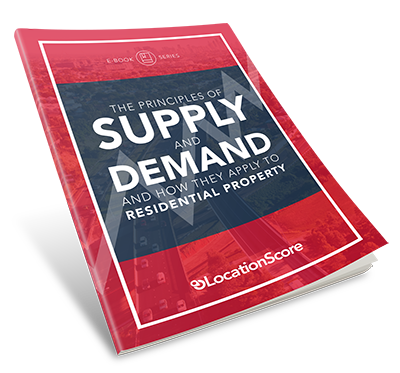×

The Principles of Supply and Demand and How They Apply to Residential Property
We Only Send You Awesome Stuff

LocationScore
|
June 5, 2017
Ben: Location Score Lads here just talking about Vacancy Rates. Bryce, what's vacancy rates?
Bryce: Well it's the number of properties that are available for rent and the number of properties that don't have a tenant in them. It's a very simple measure but for me it's a critical measure as I'm always looking for capital growth, rental return, quality of tenant in vacancy rate. Because you can get a couple of things to stack up well, but if the occupancy level is shot, it all comes crashing down. So it's a really core indicator for investors, and it's one that probably most amateur researchers would use as a fundamental stable.
Jeremy: Absolutely, and the interesting thing about vacancy rates is that I've noticed in the last couple of years that it's not just about cash flow. It's thinking about how long am I going to have to survive without getting any rental income. But it's actually a lead indicator to future capital growth, because whatever it is that is dropping vacancy rates close to 0, it's appeal from location to tenants. And tenants are human beings just like property investors, just like owner occupiers. Whatever it is that is appealing about that suburb and causing the vacancy rate to drop, it will attract eventually owner occupiers. But the tenants are more agile because it's easier to get a lease than a mortgage. So the appeal will flow over to owner occupiers and they'll place pressure on prices. The low vacancy rate will put pressure on yields to go up which will attract investors so the vacancy rate is quite a good early indicator of excellent capital growth potential.
Ben: Now it is hard though because ultimately what we're trying to do is measure vacancy rate so we know the formula but what do we do? There's some people who would count the lights that were on or the lights that didn't turn on, or looking at the electricity bill in buildings to see how many people are actually living in that high rise residential apartment. Now that's not a great way to measure it but how do we measure it Jeremy?
Jeremy: Well the easiest way is to jump onto one of these real estate listing portals and look at what is available for rent. However, some of the calculations can be based on a simpler count, but you have to look closely at the description because some of them may be available at a future date currently occupied/not vacant. Now there can also be problems with the property manager not removing the advertisement after it's been filled. So there are some unreliable circumstances, but usually they tend to balance one another out and if you've got a significant market size you can get a reasonably reliable score. The thing that's great about vacancy rates is that it's real time. You're not waiting for some data to be published. You can jump online now and see how many copies there are listed for rent.
Ben: And what I love about the way in which we've aggregated it is because goign abck 10 or 15 years, I was doing it all manually. I would literally pick my 50 suburbs that I want to analyse and then it's like click on, ok, number of houses 104 versus the volume of properties that I know about and then trying to get a trend. We've got all of that data, done all of the hard work, put it altogether. There's literally 10s of 1000s if hours saved in aggregating that data.
Bryce: Yeah and I always say the biggest expense anyone has when they're investing in property is the vacancy. It's not rates, it's not body corporates, it's vacancy. So, it's a really critical measure. When you do the back testing, have you got a sense of trends on where the equilibrium sits and what's either side of it?
Jeremy: Yes, it's around about 2.5 maybe to 3% It seems to be the, I've read and heard a lot of people say that 3% is the marketing balance, but I think that's a lot like saying that you need to drink 8 glasses of water.
Ben: wait a sec, roughly 3%
Jeremy: Yes roughly 3% but I mean, calculations can vary dramatically but I would put it at around 2.5% but I wouldn't be interested in it unless it had a vacancy rate of around 1% and of course, the lower the better.
Bryce: So there you go folks, it's a very critical measure that you need to be looking at if you're buying your next investment property. Vacancy Rate.
Note: This is just a brief explanation on Vacancy Rate. If you are interested to learn how you can apply this in your own research, our upcoming webinar will unpack this in more details. Learn more about our webinar here.
Most Popular Blog Posts